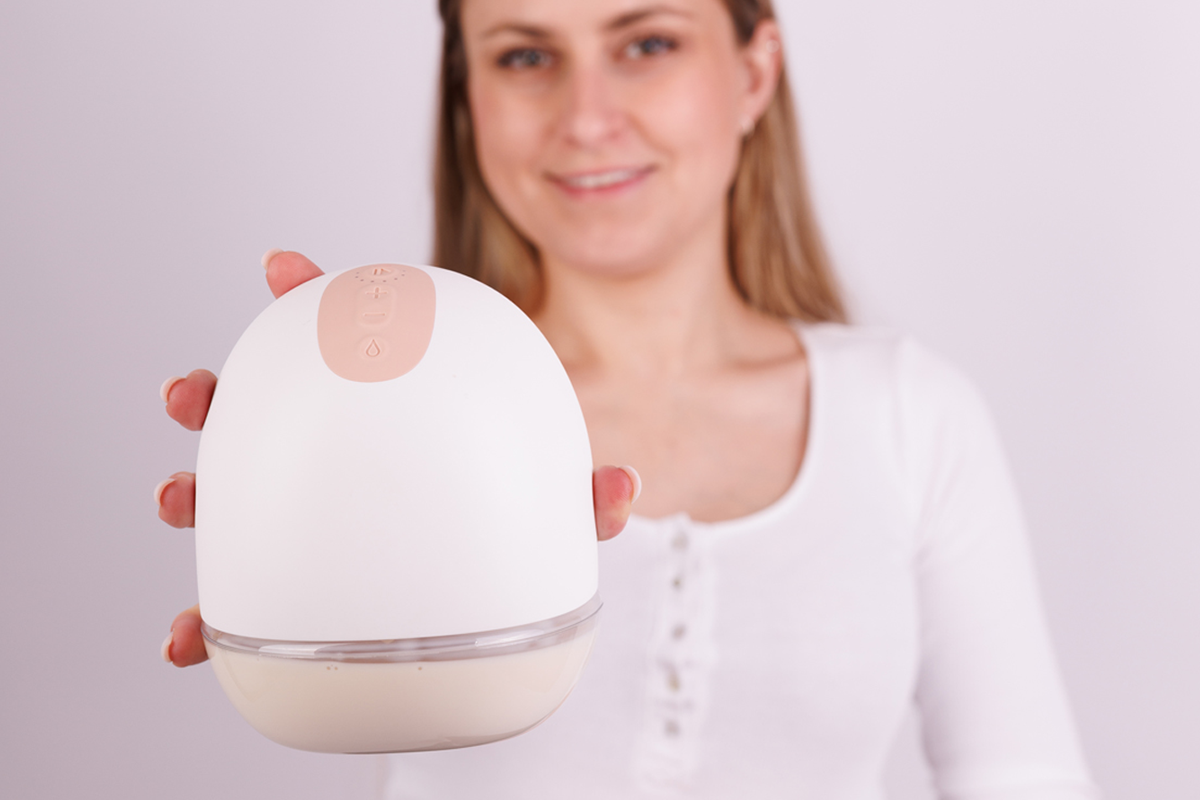Returning to work after having a baby can feel overwhelming. Juggling the demands of your job with the commitment of providing breast milk for your baby is a monumental task. The stress of maintaining your milk supply, finding time to pump, and organizing your new routine can feel like a lot. But you can do this, and you don't have to navigate it alone. This guide will walk you through everything you need to know about creating and sticking to a successful back to work pumping schedule, including practical tips, essential gear, and a clear understanding of your legal rights.
The basics of pumping at work
Pumping at work is a critical part of maintaining your milk supply while you're away from your baby. Your body produces milk on a "supply and demand" basis—the more milk that is removed, the more milk your body will make.
💡 If you skip pumping sessions, your milk production can decrease, which can impact how much milk is available for your baby.
To ensure you can pump effectively, you'll need the right gear. There are two main types of breast pumps: manual and electric. Electric pumps, particularly double electric pumps, are often the most efficient option for working mothers as they allow you to pump both breasts at once, saving valuable time. For an easy transition back to work, make sure you have all the necessary back to work pumping essentials. This includes a dedicated pump bag, milk storage bags or bottles, a cooler bag with ice packs, and a hands-free pumping bra.
The Perifit Pump breast pump is the perfect companion for active moms. Quiet, wearable, and discreet, it makes pumping at work simple and stress-free. Available in single and double versions, it provides hospital-grade performance for an efficient and comfortable experience.
How to create your pumping schedule
Creating a pumping schedule for a working mom is all about consistency. The goal is to mimic your baby's feeding patterns as closely as possible to maintain your milk supply.
Step 1: Determine your needs
Start by figuring out how many ounces your baby needs while you're at work. Your baby drinks a bottle approximately every 2 to 4 hours. Then you need to determine how much your baby drinks depending on his age. Start introducing a bottle at least a month before getting back to work to make sure your baby is ok with the bottle, and to determine what is the best amount of milk per bottle for your baby. It is common for a breastfed baby to drink a smaller bottle than a bottlefed baby.
For example, if you are away from your 3 month old baby for 8 hours you will need 2 to 3 bottles of 4.06 to 5.07 oz depending on your baby.
Step 2: Plan your schedule
Aim to pump every 2 to 4 hours, or as often as your baby would typically feed. The time of your breaks will depend on your work schedule. Here are some sample pumping schedules:
- For an 8-hour workday:
- 9:00 AM: Pump upon arrival (or one hour into your shift).
- 12:00 PM: Pump during your lunch break.
- 3:00 PM: Pump in the afternoon before heading home.
- For a 10-hour workday:
- 8:00 AM: Pump upon arrival.
- 11:00 AM: Second pumping session.
- 2:00 PM: Third pumping session.
- 5:00 PM: Final pumping session before leaving.
Pumping at work tips for success
Making your workplace pumping routine as easy as possible requires a little preparation and strategy.
- Prepare in Advance: Get into the habit of packing your pump bag the night before. This ensures you won't forget anything important in the morning rush.
- Maximize Your Time: To get the most out of each session, consider hands-free pumping so you can multitask.
- The Importance of Hydration and Nutrition: To increase your milk supply, make sure you're drinking plenty of water throughout the day. Keep a reusable water bottle at your desk and stay hydrated. Eating healthy, balanced meals and snacks is also essential for maintaining your energy and milk production.
- Find Your Pumping Sanctuary: A private, comfortable, and clean space is crucial for a successful pumping session. A quiet environment can help you relax and encourage a stronger let-down.
- Communicate with Your Employer: Before you return to work, talk to your manager or HR department about your needs. Discuss where and when you can take your pumping breaks. This conversation is an important step to ensure a smooth transition.
Combining pumping and nursing
The goal of your back to work pumping schedule is to supplement your breastfeeding routine, not replace it. You can successfully combine breastfeeding and pumping, as the two practices work together to support your milk supply. You'll likely continue a breastfeeding and pumping schedule, nursing in the morning and evening, and on weekends. These sessions are often called "anchor feeds" and are key for maintaining your supply and your special bond with your baby.
💡 Weekends are a great time to skip pumping and nurse your baby more frequently to help your body regulate and to reconnect.
Legal rights: What you need to know
You have rights as a nursing parent in the workplace. The Fair Labor Standards Act (FLSA), as amended by the PUMP Act, requires employers to provide reasonable break time for an employee to pump breast milk for one year after the child's birth. This time must be provided each time the employee needs to pump. Your employer must also provide a private, designated space that is not a bathroom, for you to pump. The space must be shielded from view and free from intrusion.
💡 Knowing the workplace breast pumping laws is the first step. If you have questions about your rights or need to discuss your needs, talk to your HR department.
Storing and handling breast milk
Proper storage and handling of breast milk are crucial for your baby's safety. Here are some breast milk storage guidelines for milk you pump at work:
- Room Temperature: Use within 4 hours.
- Insulated Cooler Bag with Ice Packs: Use within 12 hours.
- Refrigerator (39°F/4°C): Use within 4 days.
- Freezer (0°F/-18°C): Use within 6 months is best.
Always label your milk bags with the date and the amount. Before reheating breast milk, check for a sour smell. The best way to use extra breast milk you may have is to store it for later, but it can also be used in baby food or in a milk bath.
Common challenges & how to overcome them
Returning to work can present some common challenges. A dip in milk supply, for instance, is a frequent concern. This can be due to a new routine, stress, or not pumping as often as you need to. Stress and milk supply are closely linked. If you're feeling stressed, try relaxation techniques like deep breathing before you pump to help with your let-down.
If you find yourself with less milk than usual, try adding a power pumping session once a day. This involves pumping in short bursts to signal to your body that it needs to produce more milk. A good method is to pump for 10 minutes, rest for 10, pump for 10 more, and so on for about an hour. Remember, a successful pumping journey is all about adapting and finding what works best for you and your baby.
Returning to work while breastfeeding is a true balancing act, but with a solid back to work pumping schedule and the right tools, it is completely achievable. You're giving your baby an incredible gift, and you should feel proud of your commitment. By preparing in advance, knowing your rights, and finding a routine that works for you, you can successfully continue your breastfeeding journey while building a career.





